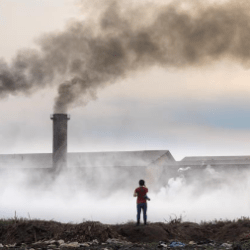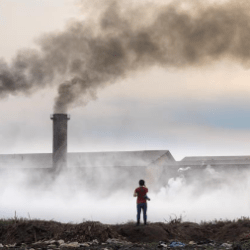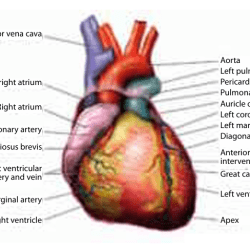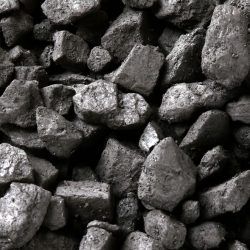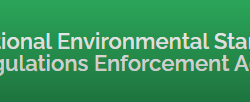Air pollution places an outsized burden on certain population groups. Women tend to have far higher exposure to indoor air pollution, especially in countries where the use of polluting cooking and heating fuels is common (Ali et al. 2021). Evidence from rural Xuanwei, China, shows that lifetime use of bituminous (“smoky”) coal is associated with nearly a 100-fold higher risk of lung cancer mortality in women than the use of anthracite (“smokeless”) coal (Bassig et al. 2020).

The impacts of air pollution are also known to be particularly harmful for children in their early development stages. The World Health Organization (WHO 2018) estimates that each year, globally, around 600,000 children die from acute lower respiratory infections caused by polluted air.
Air pollution can cause lifelong impacts by affecting neurological development and cognitive abilities, while increasing the risks of asthma and childhood cancer as well as lifelong chronic diseases such as cardiovascular disease (WHO 2018). Ethnic minorities, too, bear a disproportionate burden. Polluting assets such as power plants or industrial zones have been shown to be located purposefully in low-income or ethnic minority neighborhoods.
There is evidence for the United States that racial minority communities are significantly more likely to have new polluting manufacturing plants built in the vicinity; in contrast, communities with higher income levels are less likely to have new plants located nearby (Wolverton 2009). Similarly, ethnic composition drives environmental inequality in US cities—for instance, industrial air toxins affect black and Hispanic neighborhoods in the Midwest and South-Central regions the most (Zwickl, Ash, and Boyce 2014).
In the period from 1995 to 2004, black communities were consistently more exposed to air pollution than white communities. Nonmonetary forms of marginalization can even dominate income levels in explaining exposure to air pollution: middle-class African Americans are exposed to more toxins than lower-income white communities.
Reference: World Bank https://openknowledge.worldbank.org/server/api/core/bitstreams/61d04aca-1b95-4c06-8199-3c4a423cb7fe/content
